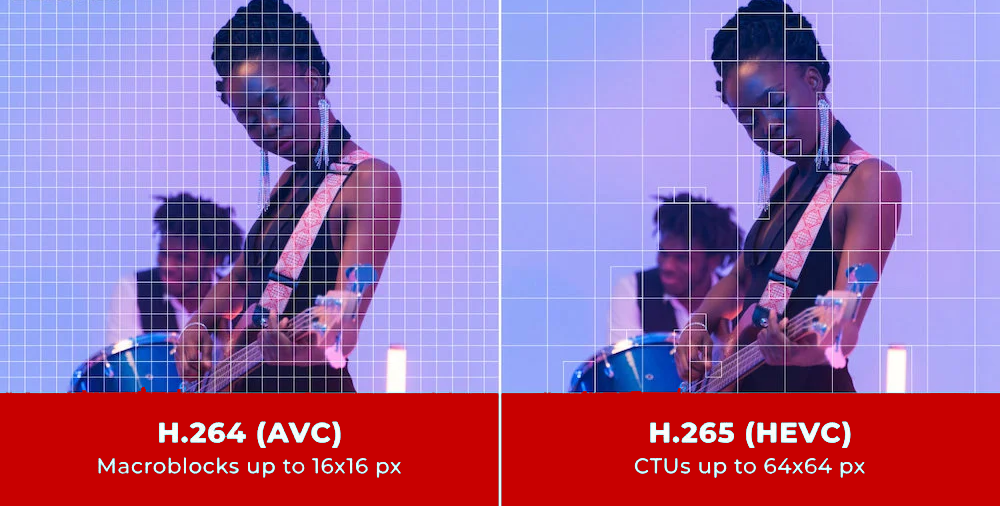




Video codecs are essential in determining video quality, file size, and playback performance. H.264 and H.265 are two popular codecs, each offering unique benefits. Let’s explore their differences to help you choose the right one for your needs.
H.264, also known as Advanced Video Coding (AVC), is a widely adopted video compression standard used in a variety of applications, including streaming services, Blu-ray discs, and online platforms like YouTube. Its broad compatibility and efficiency have made it a favorite in the industry.
Key Features:
Compatibility: Supported across nearly all devices and platforms.
Compression Efficiency: Offers moderate compression with good video quality but produces larger file sizes compared to more recent codecs.
Lower Processing Power: Ideal for use on older devices due to its lower computing power requirements.
H.265, or High Efficiency Video Coding (HEVC), is the successor to H.264, developed to provide better compression while maintaining high video quality. It excels at high-resolution formats, like 4K and 8K, and significantly reduces file sizes without compromising visual quality.
Key Features:
Better Compression: Reduces file size by about 50% compared to H.264.
High-Resolution Support: Supports up to 8K resolution, making it suitable for modern content.
Adaptive Streaming: Ideal for smoother streaming at varying bandwidths.

H.265’s major advantage is its ability to maintain the same video quality as H.264 but at half the bitrate, which leads to significantly smaller file sizes. This is beneficial for streaming, storage, and reducing bandwidth usage.
| Feature | H.264 (AVC) | H.265 (HEVC) |
| Compression Efficiency | Good | Excellent |
| Compatibility | Very High | Moderate |
| Video Quality | High | Higher |
| Processing Power | Lower | Higher |
| Use Case | General use, live streaming, video conferencing | High-resolution content, storage-limited scenarios |
| Resolution | H.264/AVC Bandwidth Required | H.265/HEVC Bandwidth Required |
| 480p | 1.5 Mbps | 0.75 Mbps |
| 720p | 3 Mbps | 1.5 Mbps |
| 1080p | 6 Mbps | 3 Mbps |
| 4K | 32 Mbps | 15 Mbps |
Although H.265 offers superior compression, it requires more processing power for both encoding and decoding. This means that older devices might struggle to play H.265 videos unless they have dedicated hardware support for HEVC.
H.264: Works seamlessly on most older and modern devices.
H.265: May require newer hardware and HEVC support for smooth playback.
Use Cases
H.264: Ideal for live streaming, video conferencing, and platforms that require broad compatibility. It’s the go-to codec for general use and applications where reliability and universal support are crucial.
H.265: Best suited for applications requiring high-resolution video, such as 4K and 8K streaming, and situations where storage space is limited. H.265 is also a good choice for future-proofing content as more devices begin to support this codec.
Many modern platforms now support H.265/HEVC due to its enhanced efficiency for high-quality streaming. Content Delivery Networks (CDNs) that allow H.265/HEVC ingestion from third-party encoders, include:
For ISPs seeking to optimize bandwidth delivery, Jaze ISP Manager seamlessly integrates with top BNG providers supporting both RADIUS and Diameter protocols for flexible policy delivery and ensuring a seamless end user experience. Click here for more information.